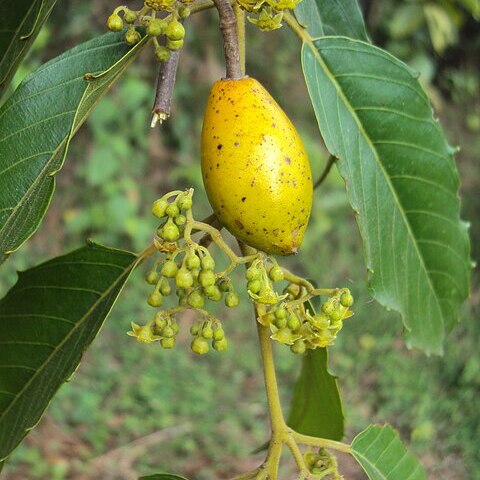A tree. It grows to 35 m high. The trunk 22 m long and is 80 cm across. It loses its leaves during the year. The leaves are almost alternate and simple. They are 8-15 cm long by 3-5 cm wide. The fruit are small and fleshy. They are 3 cm long by 2 cm wide. There is one seed.
A fast-growing deciduous tree, up to 90 ft. high, or rarely more
Rare in our area, except in S.E. Nigeria and the Cameroons.
Fruits purplish-black when ripe
Flowers small, greenish


